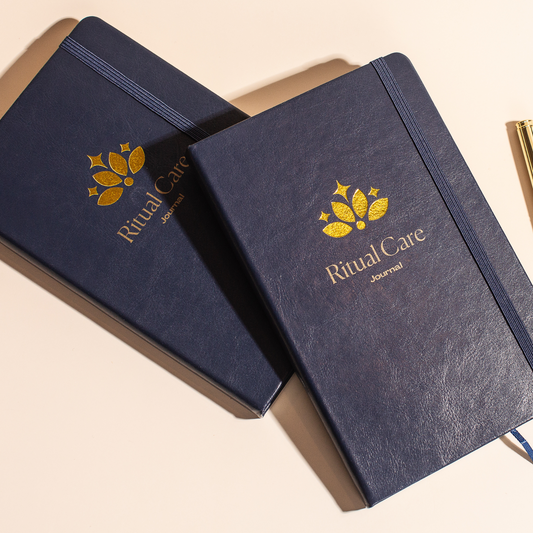When you think of mindfulness, what do you picture? Do you see yourself sitting … and sitting … and sitting? Sure, there are tremendous benefits of having a sitting meditation practice to cultivate mindfulness. Nonetheless, it just might bore you to tears.
Despite popular belief, mindfulness doesn’t have to be dull. You can set an intention to make mindfulness a little bit less about sitting and little more about having a good time.
Here are seven ways to add some fun to your mindfulness equation:
What if you observed those crazy thoughts, and even the not-so-crazy thoughts, with a sense of humor, curiosity, and detachment?
For example, when you notice your mind beating yourself up about how you haven’t cleaned your house in a while, you could say something like this to yourself: “Haha! There goes that mind again. Who does it think I am, Mary Poppins? I can’t snap my fingers and make the house look perfect.”
By viewing your mind through a lens of humor, you can recognize its tendencies without berating yourself for them.
Any type of exercise can help you cultivate mindfulness, and it doesn’t need to be those typically associated with mindfulness, like yoga or martial arts. Practice mindfulness during any of your favorite activities, whether you’re jogging, hiking, surfing, swimming, or even dancing. When you notice your mind wandering, you can simply guide it back to movement of your body.
Here’s another playful idea: What if you turn mindfulness into a game by challenging yourself and your friends to practice it every day? Perhaps you can create a point system where each day’s mindfulness activity counts as one point. See who wins at the end! This not only makes mindfulness more fun, but it includes an accountability system. Since you’re much more likely to stick to something when you’re held accountable, you might find that your practice becomes more routine.
Try an improv class to use improve comedy as a mindfulness tool. One of the main tenants of improv is to just go along with what presents itself. They call it, “Yes, and ...” Whatever someone does on stage, you go along … and then you add to it. By practicing “Yes, and …”, you’re taking a lot of worrying and ruminating out of the picture.
Improv also forces you to stay present. If you’re not paying attention to what your teammates are doing, you’ll be lost and won’t know how to add to the narrative.
Here are some guided meditations that can help you change up your routine.
Even though you’re focused on your own thoughts and in a quiet headspace during a seated meditation, merely sitting next to your friend or partner might make the practice feel more fun. Plus, after you’re finished with your practice, you can share some tea or go for a walk.
When I was on vacation this past year with my friend Emily, we meditated next to each other at the beach every morning. After we sat, we shared details about our practices. It felt good to talk about my meditation–inspired epiphanies as well as my not-so-enlightened thoughts, and I enjoyed listening to Emily’s insights.
When you add variety, a lens of humor, friends, and some movement to just about anything, you’re going to have fun. Meditate on that!
Learn a natural, effortless style of meditation that helps invite renewal and freshness into every day with Basics of Meditation, a self-paced online course guided by Deepak Chopra. Learn More.
Despite popular belief, mindfulness doesn’t have to be dull. You can set an intention to make mindfulness a little bit less about sitting and little more about having a good time.
Here are seven ways to add some fun to your mindfulness equation:
1. Laugh About It
When you’re mindful, you’re nonjudgmentally paying attention to your thoughts. If you’re like me, and every other human for that matter, you may notice your mind coming up with some seriously off-the-wall thoughts.What if you observed those crazy thoughts, and even the not-so-crazy thoughts, with a sense of humor, curiosity, and detachment?
For example, when you notice your mind beating yourself up about how you haven’t cleaned your house in a while, you could say something like this to yourself: “Haha! There goes that mind again. Who does it think I am, Mary Poppins? I can’t snap my fingers and make the house look perfect.”
By viewing your mind through a lens of humor, you can recognize its tendencies without berating yourself for them.
2. Move It or Lose It
My mentor recently taught me some basic moves of the meditative exercise technique of chi gong (or qi gong). Similar to tai chi, the simple, flowing movements develop mindfulness without boredom. Instead of simply paying attention to the mind, you can direct your attention to the movement and the flow of energy.Any type of exercise can help you cultivate mindfulness, and it doesn’t need to be those typically associated with mindfulness, like yoga or martial arts. Practice mindfulness during any of your favorite activities, whether you’re jogging, hiking, surfing, swimming, or even dancing. When you notice your mind wandering, you can simply guide it back to movement of your body.
3. Play It
You can add an element of play to your mindfulness practice by participating in a challenge with others. For example, my nonprofit, Compassion It, hosts the 30-Day Compassion It Challenge each year. Each week, you get support and guidance as you make mindfulness, self-compassion, and compassion a priority. Plus, in many online challenges, you participate with others from around the world.Here’s another playful idea: What if you turn mindfulness into a game by challenging yourself and your friends to practice it every day? Perhaps you can create a point system where each day’s mindfulness activity counts as one point. See who wins at the end! This not only makes mindfulness more fun, but it includes an accountability system. Since you’re much more likely to stick to something when you’re held accountable, you might find that your practice becomes more routine.
4. Improvise It
They say laughter is the best medicine. What better way to stay present than to laugh?Try an improv class to use improve comedy as a mindfulness tool. One of the main tenants of improv is to just go along with what presents itself. They call it, “Yes, and ...” Whatever someone does on stage, you go along … and then you add to it. By practicing “Yes, and …”, you’re taking a lot of worrying and ruminating out of the picture.
Improv also forces you to stay present. If you’re not paying attention to what your teammates are doing, you’ll be lost and won’t know how to add to the narrative.
5. Vary It
If you’re finding yourself stuck in your meditation rut, perhaps it’s time to add some variety to your sitting practice. For example, instead of listening to the same guided practice over and over, you can look for some new recordings that suit you. Or if you mostly practice Vedic meditation using a mantra or phrase, perhaps you can try something like Vipassana, or insight, practices.Here are some guided meditations that can help you change up your routine.
6. Share It
Sharing any activity with a friend, family member, or significant other usually ups the fun count. Mindfulness is no exception. Whether you’re practicing a sitting meditation, walking meditation, or doing chi gong, you’ll most likely have more fun if you’re not alone.Even though you’re focused on your own thoughts and in a quiet headspace during a seated meditation, merely sitting next to your friend or partner might make the practice feel more fun. Plus, after you’re finished with your practice, you can share some tea or go for a walk.
When I was on vacation this past year with my friend Emily, we meditated next to each other at the beach every morning. After we sat, we shared details about our practices. It felt good to talk about my meditation–inspired epiphanies as well as my not-so-enlightened thoughts, and I enjoyed listening to Emily’s insights.
7. Change It
Speaking of meditating on the beach, another way to add variety and more fun to your practice is to try out some different locations. Perhaps it would be fun for you to meditate outside in nature. Or maybe you’d like to see what happens when you practice in a busy, public place. Make a list of the most inspiring places in town and try a different spot each week.When you add variety, a lens of humor, friends, and some movement to just about anything, you’re going to have fun. Meditate on that!
Learn a natural, effortless style of meditation that helps invite renewal and freshness into every day with Basics of Meditation, a self-paced online course guided by Deepak Chopra. Learn More.






















